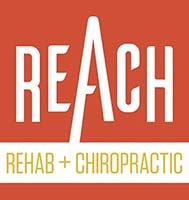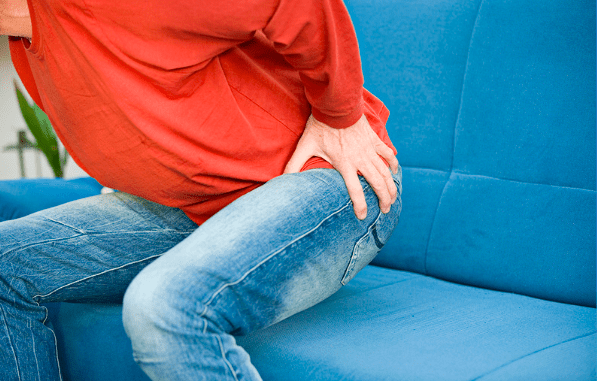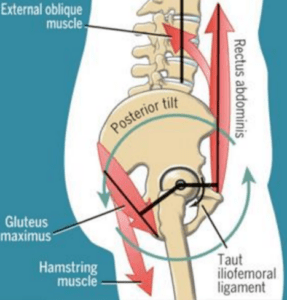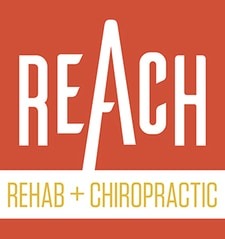What is Hip Impingement?
Hip Impingement, or Femoroacetabular Impingement (FAI), is one of the most common causes of hip pain and groin pain. The hip joint is a ball-in-socket articulation, so two main culprits can lead to hip impingement. The first culprit is the femoral head (ball), and the second culprit is the acetabulum (socket).
Hip Impingement can be associated with joint damage, arthritis, and chronic muscle tightness. Here are the two main causes of hip impingement:
- Structural hip impingement — Structural changes to the hip joint
- Congenital (present from birth)
- Trauma (Injury)
- Structural predisposition (how the joint developed)
- Functional Hip Impingement — muscle imbalance and discoordination causing the joint not to move smoothly and evenly
Most cases of hip impingement that seem to come out of nowhere are typically functional hip impingements that can be corrected with an exercise strategy.
Experiencing hip pain or pinching in the front of the hip? Schedule an appointment with your Plymouth Hip Pain Experts today!

What causes Hip Impingement?
Hip Impingement most commonly causes pain or pinching in the front side of the hip (near the hip crease). The pinching sensation is caused by the poor articulation of the hip joint, meaning that the ball is not perfectly sitting within the socket. Poor articulation is often due to an imbalance or dis-coordination of the muscles that control the hip joint. Often, the head of the femur (ball) is shifted more anterior (forward) within the acetabulum (socket). This can result in the pinching and pain that is felt.
Another common cause of Hip Impingement is poor pelvic positioning. If you have an anterior pelvic tilt position, this can lead to less space in the socket for the ball to move forward (anterior). If this position persists, it can lead to premature structural change like labral tears or early onset of arthritis.
How do I know if I have Hip Impingement?
There are many causes of hip and groin pain. So, how do you determine if Hip Impingement is the cause of your pain?
Common physical symptoms of Hip Impingement:
- Pain in the front (anterior) or inside (groin) of the hip.
- Pinpoint tenderness around the hip crease.
- Pain and/or tightness along the front and inside of the upper thigh.
- Pain and or tension along the hip flexor muscles (psoas).
- Hip pain while exercising. (i.e. My hip hurts after running or squatting)
- Hip pain when sitting for long periods of time (30+ minutes)
- A noticeable difference in hip range of motion compared to the unaffected side.
Hip Joint Pain
If my hip pinches, is it Hip Impingement?
Though you may be experiencing one or more common physical symptoms, it doesn’t necessarily mean the cause of your Hip Impingement is the hip joint itself.
Weird, right?! Bear with us here.
Just like a leaky roof can cause damage to your ceiling, we often find a “leaky” back can cause pain in the hip, even in the absence of back pain. However, just like you would want to fix the leaky roof and the drywall damage, you want to address both the low back and the hip.
Common conditions mimicking Hip Impingement:
What can I do about Hip Impingement?
Many conservative treatments can be used for Hip Impingement to avoid surgery. With all mechanical (movement) pain, there’s a ‘what’ and a ‘why’ — what the problem is and why it’s occurring in the first place. To achieve resolution, it’s crucial to not only identify and correct the problem but address the behaviors which lead to its cause in the first place.
Here are some self-help tips:
- Identify what activities worsen your symptoms.
- Take mental notes of your actions when your pain feels better or worse to identify any behavioral patterns.
- Scale back your activities (only for a few weeks).
- Modify any activities that cause your symptoms. For instance, if your pain starts after squatting for ten reps, only squat 3-8 reps. Scale this activity back for a week, then see if you’re ready to go back up, i.e., ten reps the following week.
- Loosen tight tissues
- Overuse of the anterior hip muscles (Hip Flexors) commonly causes tightness in the front of the hip. Loosen up the hip flexor muscles before doing activities that cause you pain.
- Below is a video on how to properly stretch your hip flexor muscles.
- Start a stretch routine
- If you’re experiencing pain daily, then use that pain as motivation to start a daily stretching routine!
- Here is an easy Beginner Stretch Routine.
Find Hip Pain Relief At REACH Rehab + Chiropractic
It is important to be properly educated on positions to avoid that may increase pain while performing stretches and strengthening exercises for the hip joint. If completing these techniques (above) does not improve your pain, you may need to be assessed by a Southeast Michigan Chiropractor to find the core problem to personalize your treatment plan.
Are you searching for a qualified sports chiropractor in Plymouth, MI, for your hip pain? REACH Rehab + Chiropractic is one of the leading names for hip pain treatment in the area. We provide personalized assessments and treatment to help you regain your full range of motion quickly.
Next time you are searching for “hip pain treatment near me” in Canton, Ann Arbor, or another local community, think of REACH Rehab + Chiropractic. We treat acute and chronic hip pain. Book an appointment or contact us today at (734) 530-9134 for effective hip pain relief.




